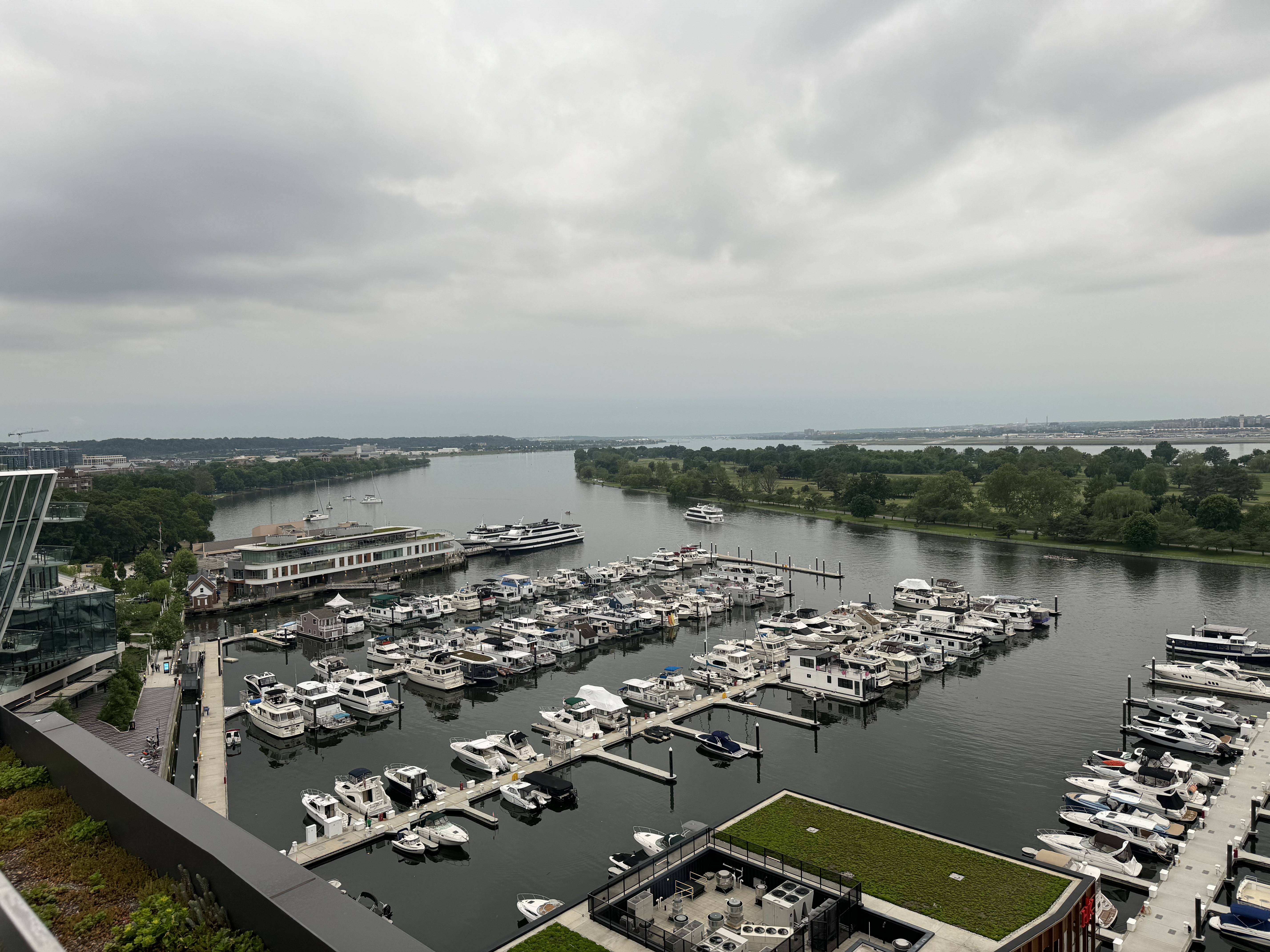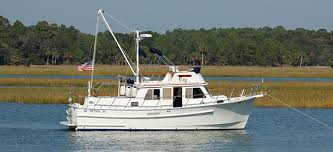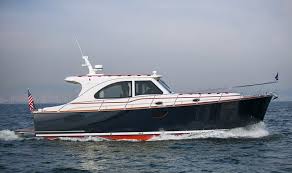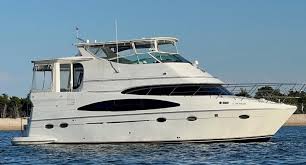Looking back on the 2025 Sailboat Market Split: What Buyers and Sellers Need to Know Moving Forward
U.S. Buyer Purchases Yacht in Spain, Part II: Survey Options & Logistics
U.S. Buyer Purchases a Yacht in Spain, Part I: The Search
Why use a yacht broker? Part II
Why use a Yacht Broker? Part 1.
Looking at a boat but questioning it’s engine hours?
What Kind of Yacht do I buy?

Many of my brokerage clients are experienced boaters selling a boat and/or getting into their next boat. They know what they want and we can target our search fairly quickly down to a few manufacturers and models.
However, many clients are new to yachts, or they’re crossing over from sail to power and are not so knowledgeable about the different types of yachts and which ones will meet their requirements.
For this post, we will first focus on power boats and look at sailboats separately in another post.
When beginning your yacht search, we will usually ask our buyers some version of the following questions:
- Where are your cruising grounds?
- Will you be day boating, weekending or extended cruising?
- If cruising, is it coastal or long distance?
- When cruising, do you prefer a slip, mooring, or hanging out on the hook?
- Will the boat live at a dock or a slip?
- Is it just you and your partner or will you have kids/guests often?
- Do you like places aboard to be in the sun or do you want protection from the sun?
- Will you be doing a lot of cooking and living on the boat?
- Is speed/performance important*?
*Note: This last question is totally different for power boaters than for sailors. I grew up sailing and had a Beneteau 35 for years. But as a weekend warrior, a lot of my favorite destinations were too far away. So I went to power. Now Nantucket is 3 hours away instead of 12.
There are other factors, but this should be a good start.
At Latitude Yacht Brokerage here in the northeast, most powerboat buyers tend to favor yachts that fall into one of 5 categories. There are many variants, but I’ll focus on:
Sedans, Trawlers, Downeast boats, Motor Yachts, Convertibles.
Admittedly, the differences between all these models aren’t always obvious and there are many overlaps. But I’ll try to sort it as best I can and (in general) relate them to different types of boating.
Sedan Boats

Sedan boats, often referred to as sedan cruisers or sedan bridges, are designed with a single main deck that combines the helm and the salon on the same level. There is often (but not always) a 2nd helm and seating on the flybridge. These boats are similar to convertibles as there is a pretty roomy salon separated from the cockpit by a glass door of some type. They are powered by twin engines and can cruise in the range of 18-25 KPH depending on their size and engine type. They usually have a swim platform that can accommodate a dinghy.
Best for: Day or weekend cruising, you can also do long coastal trips as long as you plug in at a slip every couple days so you can recharge everything.
Trawlers

Trawlers are best known for their long-distance cruising capabilities, fuel efficiency, and seaworthiness. They almost always have single engines, and with top cruising speeds in the high single digits or maybe a little faster. As opposed to a planing hull (like a sedan or convertible) their hulls have more displacement, which makes them more stable in snotty weather. Their beams tend to be narrower than other boats. If they have a flybridge, they’ll have more living area, but without them the living area tends to be smaller. The swim platforms tend to be smaller so you need to be creative to accommodate the dinghy Or drag it if the seas aren’t too rough.
Best for: Longer journeys, can go longer on a mooring or on the hook, better for rough weather
Downeast Boats

Very popular in the northeast with their heritage coming from lobster boats or Maine-style fishing boats. They usually have a flared bow which keeps the ride drier and is good for rough water. The helm is usually positioned forward, with a pretty roomy salon with good visibility, great for when you’re at anchor. Galleys tend to be smaller. With the deep hull, what you get for stability might cost you in speed, they cruise in the 15-20 knot range depending on length and age. Dinghies can go on the swim platform.
Best for: Day or weekending. OK at anchor or mooring but if it gets choppy they tend to roll more than others.
Motor Yachts

Our buyers of these boats tend to look at Carvers, Meridians, Silvertons and Sea Rays. They are instantly recognizable as they feature a large rear stateroom and a covered lounge area above it where the cockpit would be on other boats. These boats are for those who want room and comfort down below, especially when they’re docked or on the hook. They are slower than sedans or convertibles, with cruising speeds in the 15KPH range. If you want a large sunning area this design usually only offers a small bow area. If there isn’t an extended swim platform you’ll need to store the dinghy on its side back there.
There’s a style of boat known as “Aft Cabin”, these will be like a MY but with a sundeck over the master instead of a covered area.
Best for: Weekending, coastal cruising. MY skippers tend to like slips more when cruising. If you’re going to have a lot of crew most of the time, IMHO this is the boat for you. Also popular as liveaboards.
Convertible Boats

I have driven a convertible for 17 years. They got their name because the earlier models had a curtain or removable partition between the cockpit and the salon, so you could cruise with the salon open to the stern. Now of course the salon is separated usually by a sliding door. The single helm is up on the flybridge. Many owners (I am not one of them) use these boats for fishing as well. Salon is roomy, usually at least 2 berths, separate shower, etc. Among the faster boats with cruising speeds in the 18-25 KPH range. Ample room for the tender on the swim platform. The larger boats will have a crane at the bow to store the dinghy forward.
Best for: All of the above, though like Sedans if you’re on a long cruise it’s good to plug in every few days.
Understanding the differences between these boat types is important for choosing the vessel that best fits your boating lifestyle and needs. If you’re a buyer and you’re not sure, my advice is:
- Talk with your broker about the type of boating you want to do.
- Early in your search, make it a point to get on different types of boats, even if on paper a certain model may not look like what you want at first. I guarantee you this exercise will change your view of what you think is important in the boat you’re looking for.
- With your broker, narrow it down to 1-2 boat types then focus on them.
Also, check out my earlier blog post about our Walk the Show with a Pro program, a great way for first time buyers to narrow their list down.
Lastly, if you think I left something out or I am incorrect about something, hit the comment button and tell me what you think. After all, talking about boats is part of the fun of being a broker!
Join us at the Palm Beach International Boat Show!

Walk The Show With A Pro!
You’ll often hear this tagline from Latitude, and for good reason. We offer a unique experience that sets us apart from the typical boat show hustle—and gives our clients a major advantage.
At most boat shows, salespeople have one primary goal: selling you a new boat. Manufacturers and dealers invest heavily in bringing inventory to the show, and their teams are under pressure to sell, sell, sell.
At Latitude, we’re different. We don’t represent new boat lines—we represent you, the
buyer. Our experience and extensive network allow us to guide you through the purchase
process, helping you bypass crowds, skip the hassle, and connect directly with the right people.
How We Help You
If you're considering a new boat, we ensure you meet the right contacts and get the information you need—without the sales pressure.
For our brokerage clients, boat shows are a fantastic starting point. We help you compare
brands in terms of quality, layout, design, fit and finish, and overall feel. From there, we apply
what you’ve learned to explore top brokerage options.
Palm Beach International Boat Show is right around the corner – March 19-
23.The Latitude team will be at the show, ready to assist clients in viewing the 4,800+ used
boats (30-60 ft) currently available on Florida’s Gold Coast. For buyers from the Northeast, this is an excellent way to explore boats in the water—without dealing with snow-covered, wrapped vessels.
Let’s Plan Your Visit
Interested in working with Latitude at this show or the next? Email or call us to schedule a
planning session. We’ll discuss logistics, your preferences, and create a customized itinerary to make the most of your time.
Check us out at www.latitudeyacht.com
Email us at info@latitudeyacht.com
Call us at +1.401.619.2888
We hope to see you there!
Broker’s Advice: What to Consider Before the Survey

Part of a yacht broker’s job is to ensure that the buyer and seller involved in a boat sale both get the value they’re looking for. Our job will take different paths depending on whether we’re representing the buyer or the seller. One thing those two paths have in common, however, is that the journey actually starts long before a surveyor is hired to evaluate a boat.
For this article, I spoke with fellow brokers at Latitude Yacht Brokerage, who offered the views that follow based on decades of experience. Here’s the kind of guidance you can expect from a good broker.
For Boat Sellers, Before the Survey
When representing a seller, it starts with the broker reviewing the boat with the owner and making recommendations on getting the boat ready for sale before posting a listing. Many things we recommend will be cosmetic: paint the engine mounts, clean the bilges, make sure the canvas is repaired, etc.
More importantly, what are the known electrical, mechanical, and structural issues with the boat? It’s a used boat, so there are ALWAYS issues. And these need to be addressed up front because they’re going to come up at survey anyway.
We talk with the owner about the nature and severity of the issues, and if they can be cost effectively addressed prior to listing the boat, we will usually encourage that. Much like a house, if you put money into repairs beforehand, you’ll almost always get that investment back and then some when the boat is sold.
One of my colleagues once worked with a buyer who went to survey with a 15-year-old production sailboat. The seller had disclosed on the listing that there were some “soft spots.” Once the survey began, however, things kept getting worse; more and more moisture and other problems were uncovered that the seller either didn’t know about or didn’t disclose. The buyer eventually backed out.
Two months later, with all issues disclosed in advance, my colleague sold the same boat to a different buyer. The point here for sellers is that full transparency on all issues doesn’t lessen a boat’s salability; it just changes who your buyer is. In this case, the buyer knew about the issues up front and chose to look at the boat anyway as they found them acceptable.
Read the rest of this post on Rightboat.com
- 1
- 2

